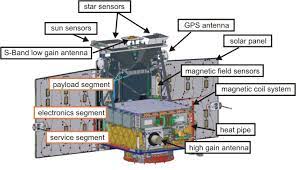Mastering Spacecraft Bus Technology: From Mission Planning to Integration and Testing

About Course
Are you ready to dive into the fascinating world of spacecraft engineering? This course will take you behind the scenes of one of the most critical yet often overlooked elements of a space mission — the spacecraft bus. As the backbone of any satellite or spacecraft, the bus houses essential systems such as power, propulsion, thermal control, and communications. From deep space exploration to Earth observation, understanding spacecraft bus technology is key to building robust and reliable missions.
In this comprehensive course, you’ll journey from initial mission planning and spacecraft selection all the way through advanced design, integration, testing, and risk management. You’ll explore the cutting-edge advancements in AI, robotics, and additive manufacturing that are shaping the future of bus technology. Through real-world case studies, best practices, and hands-on insights, you’ll gain the knowledge and skills to contribute meaningfully to the development, maintenance, and success of modern space missions.
Course Content
Introduction
Brief overview of spacecraft buses
00:00Importance of mastering spacecraft bus technology
00:00